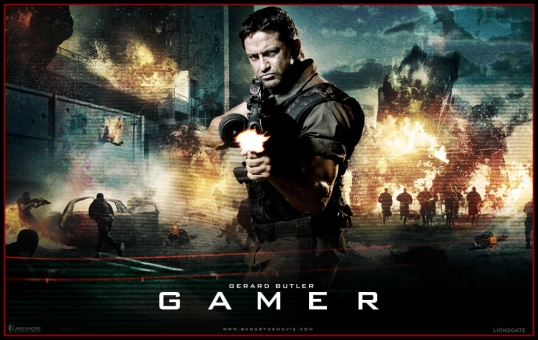Atom Egoyan’s 2005 showbiz melodrama Where The Truth Lies is a historic film for me.
First off, it’s the first film that I ever saw at the wonderful Dallas Angelika theater, which would quickly become my favorite place to watch movies in the Dallas/Ft. Worth metroplex. And I have to say that, as much as I love the Alamo Drafthouse that opened up last year, the Angelika will always hold a special place in my heart.
Secondly, and perhaps even more importantly, Where The Truth Lies was the first NC-17 film that I ever actually watched in a theater. In fact, I went into Where The Truth Lies knowing next to nothing about it. I just saw that it was an NC-17 film that was playing in a “real” theater and that was pretty much all I needed to call up some friends and head down to Dallas.
I felt terrifically grown up until I tried to buy the ticket and I was asked to show ID. I handed over my driver’s license. The ticket seller stared down at it for what seemed like an eternity. She looked up at me and then back down at the license a few times. Finally, she said, “Are you sure you’re 19?”
“I’m going to be 20 in November,” I replied.
She squinted at me for a few minutes and then said, “If you say so,” before handing me my license and a ticket.
And so, on that day, I managed to cross one goal off my list (See an NC-17 movie in a theater) and replaced it with another (Buy a ticket for an R-rated or NC-17 movie without being asked for ID). I’m still working on that 2nd goal but I have to admit that I’m starting to dread the idea that one day, I’ll be able to pass for an adult.
But what about Where The Truth Lies?
Well, the main question that I had, in 2005, as I sat down to watch this movie was why exactly was it rated NC-17. Having watched the movie in the theater and then on cable a few times after, I still honestly have no idea why the rating was as harsh as it was. Yes, there’s a lot of sex in the movies. You see a lot of boobs and you see a lot of bare asses but — well, so what? It’s really nothing wore than what you have seen in countless red band trailers for various R-rated comedies. Add to that, in Where The Truth Lies, all of that skin is on display for a reason. The film may be explicit but it’s never gratuitous.
As for the film itself, it’s technically a murder mystery but the mystery is really only an excuse for Egoyan to take a look at the seamier side of show business. In the 1950s, entertainers Lanny Morris (Kevin Bacon) and Vince Collins (Colin Firth) are the nation’s top comedy team. However, after co-hosting a 39-hour polio telethon in Miami, Lanny and Vince fly to New Jersey to do a few shows at a hotel owned by a local mobster. When the naked body of Maureen O’Flaherty (Rachel Blanchard) is found in their room, the scandal destroys both of their careers.
Fifteen years later, in the early 1970s, Lanny Morris has written a book about his life and career. Vince decides to retaliate by writing his own book. Karen O’Connor (Alison Lohman) is hired to be his ghostwriter. Karen, however, has her reasons for being obsessed with Lanny and Vince and she is also determined to discover whether Maureen truly did die of a drug overdose or if she was murdered.
Where The Truth Lies is, in many ways, an uneven film but I like it. The mystery of who killed Maureen is intriguing and, unlike a lot of viewers (check out the film’s entry at the imdb if you really need to know how much some people hate this film), I actually appreciated Egoyan’s hallucinatory and disjointed approach to telling his story. Kevin Bacon and Colin Firth both give excellent performances, both cast in the type of roles that you might not normally expect to see them playing. As a character, Karen is frustratingly inconsistent but Alison Lohman does the best that she can with the role.
Finally, Where The Truth Lies does contain one undeniably brilliant scene, in which a drugged Karen watches as an actress dressed to look like Alice in Wonderland sings White Rabbit. It’s a wonderfully strange scene, all the more so become it comes almost out of nowhere.
Where The Truth Lies is not a perfect film but, for my first experience seeing an NC-17 film in a theater, it wasn’t bad at all.






